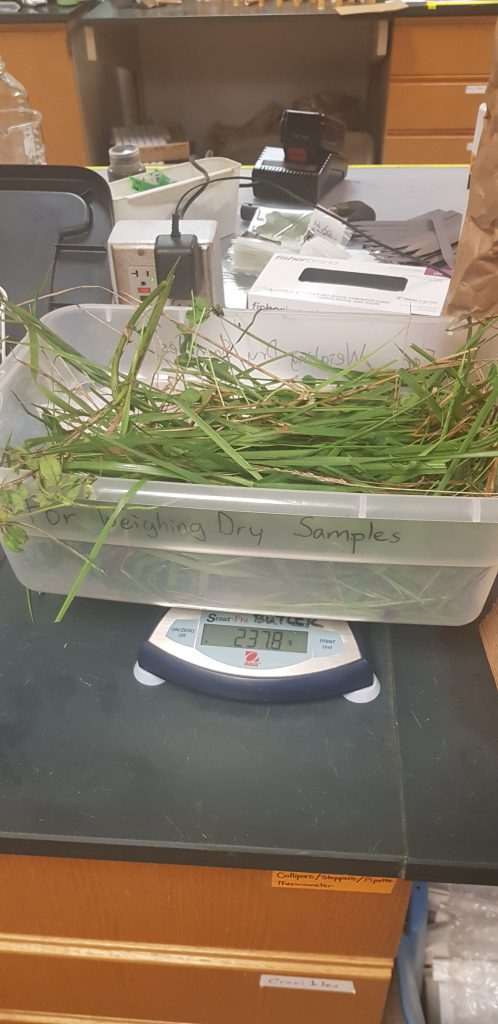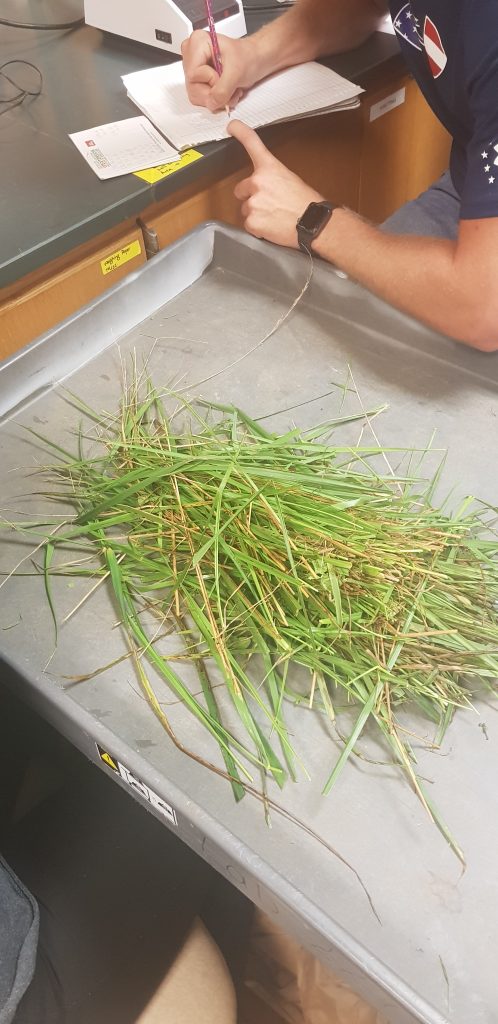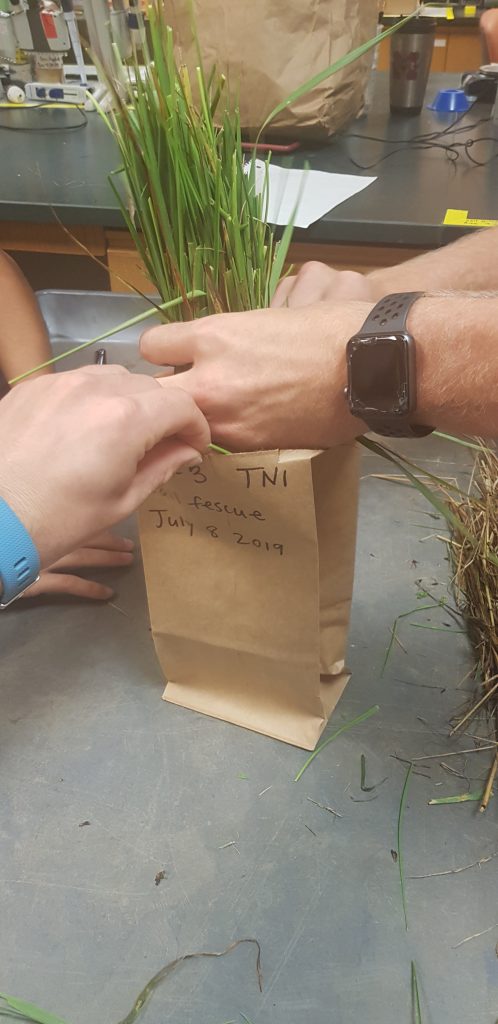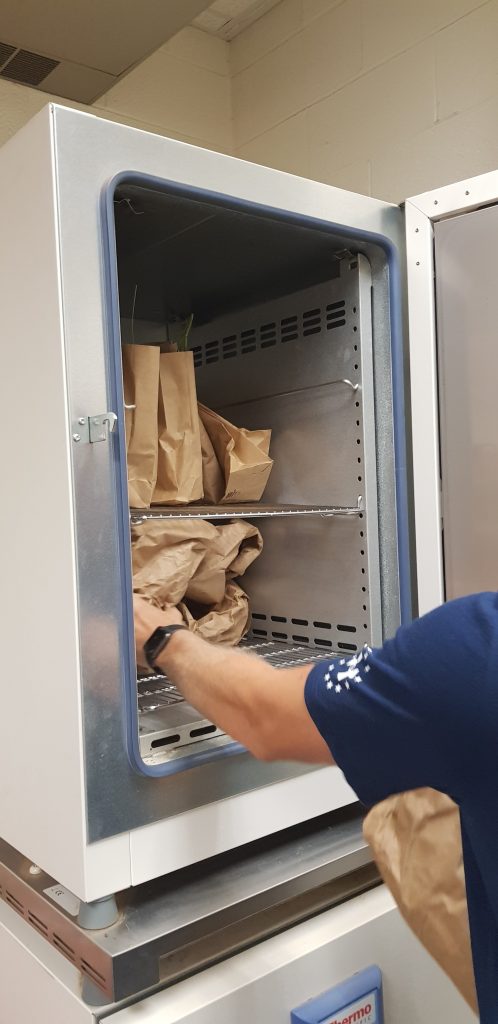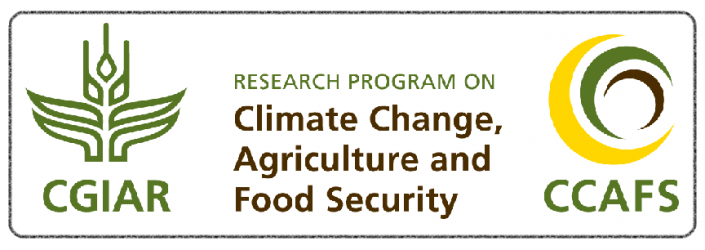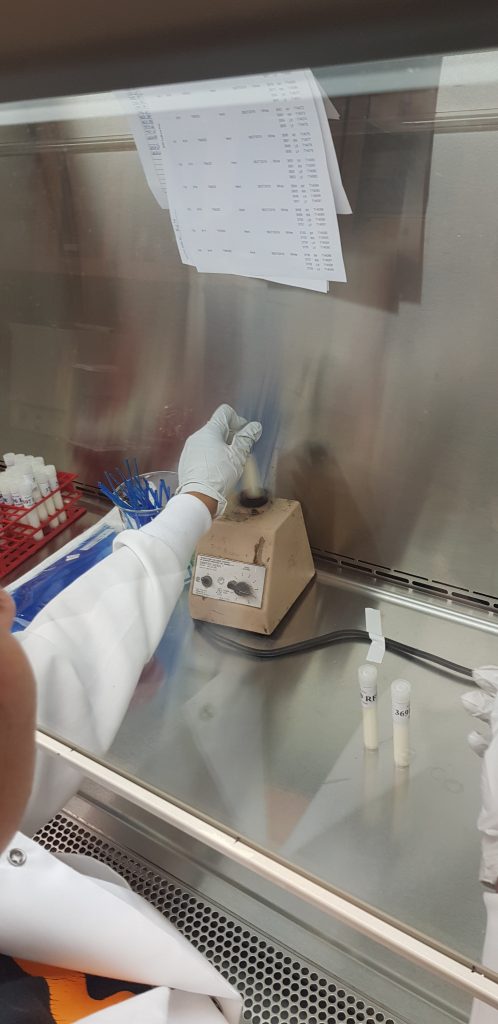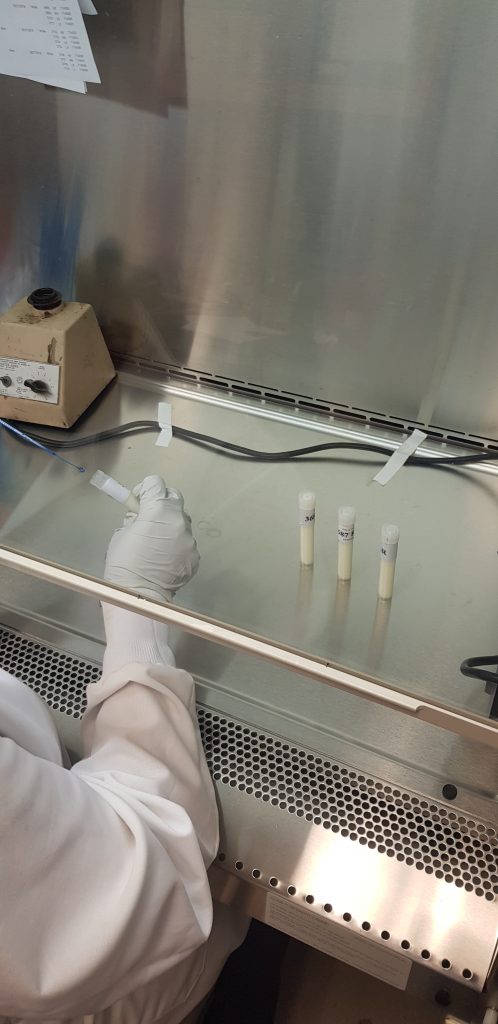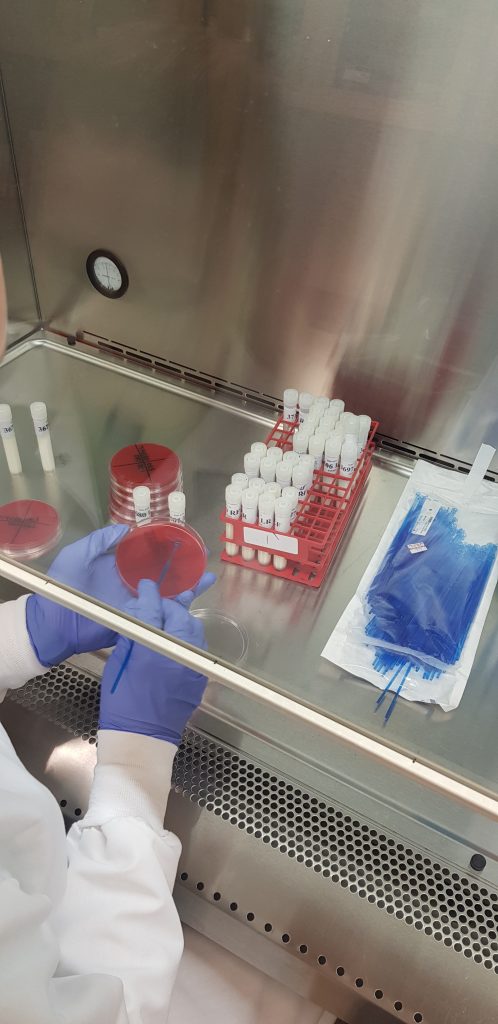Today I was in the forage laboratory sorting and preparing forages by the farm ID and grass mixture.
1 – Forage was placed on a a scale and weight was taken
2 – Roughly half of this was then removed and placed into its original bag
3 – The remaining half was then separated in accordance to the plot it was taken from and the mixture sown in the plot.
4 – If the mixture was specifically tall fescue and red clover only them species were collected and placed in individual bags and labelled ‘tall fescue’ and ‘red clover’. Any other forage species within the mixture were placed in one bag and labelled ‘weeds’.
5 – All bags were then placed in incubators at 45 degrees for 48 hours. In the coming days these forages will be grinded and results obtained.
